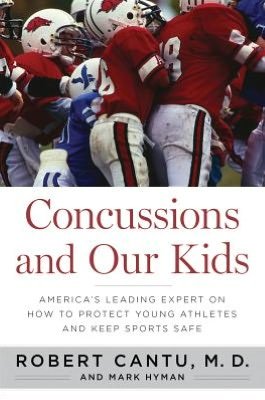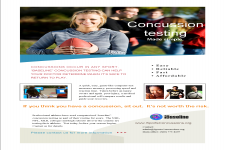The Dynavision D2 ™
- Created on Wednesday, 07 November 2012 17:16
- Last Updated on 10.11.2012
- Published Date
The Dynavision D2 ™ is an FDA cleared medical device with a long history concerning sports performance enhancement and an even longer history concerning neuro visual rehabilitation of stroke and brain injured patients. Physical medicine rehabilitation practitioners have used it to train brain injured patients to improve hand eye coordination since the 1980s. With a pedigree from the neuroscience community concerning rehab and from the sports community for improving performance it was a logical fit that the D2 ™ be applied to the management of the athlete with a concussion.
The Dynavision D2 ™ is a light board with 64 lights mounted in a board along with a small screen. The primary task is to hit the red or green lights. It assesses speed and coordination. When the computer screen and lights are used together there are numerous tasks the athlete can be asked to do.

Several universities and professional sports organizations have adopted the Dynavision D2 ™ as part of the concussion management program, and for good reason. The Dynavision D2 ™ can be used as part of baseline testing. The results of the baseline tests are used for comparisons should a concussion occur. These same athletes may also train their eye hand coordination using the Dynavision D2 ™ for performance enhancement. This means the device is familiar to them and true baseline and performance parameters can be obtained.
After a concussion, the Dynavision D2 ™ can be used as part of a traditional neuro cognitive examination and monitoring program. The baseline Dynavision D2 ™ results can be compared to repeat tests to see if deficits are present. Further, programs designed to assess multiple brain cognitive parameters can be performed in just a few minutes. The three tests assess: eye-hand coordination while multi-tasking, memory and cognition, cognition and executive functions. Observing the subject and noting their scores allows for an assessment of their concussion status.
One of the strengths of the Dynavision D2 ™ is that it has an established cadre of programs that anyone can use. These programs can be used for rehab, prehab and diagnostics. Plus it has a relatively intuitive program option that allows more experienced practitioners and ADT trained individuals to design their own programs to meet their needs. This means that the Dynavision is a highly flexible and adaptable platform. Every person who works with athletes, injured athletes and neuro patients knows that each person is different and unique; training and rehab methods need to be personalized. Fortunately the Dynavision allows us to customize the programs to address the needs of the patient. There are numerous anecdotes where a patient who expresses a deficit that he/she is having to a rehab person who can write and try a program to help that patient during that very rehab session.

One of my patients at the concussion clinic in theUniversityofCincinnatiwas injured in a wind storm. During her baseline neuro exam, we utilized the tests mentioned above and additional tests based on her specific results. The D2 was able to demonstrate the patient was unable to multi-task, making numerous math errors on simple 1 digit additions. In addition, based on a general neuro exam, the patient exhibited deficiencies in ocular motor, memory and executive function. This patient specifically benefited from the D2 as part of her neuro exam because the D2 gave measurable, unbiased results. The results of the exam were utilized to incorporate D2 training into her rehab program to improve binocularity, reaction time, multi-tasking, and cognition skills. In my opinion, without using the D2, this patient’s rehab would not have been as successful and it could have been possible to overlook subtle deficiencies that D2’s measurable results are able to track.
In the center of the Dynavision D2 ™ is a tachistoscope; or small computer screen. This screen is used in several of the evaluation and rehabilitation methods. It adds tremendous flexibility to the system because it can be used to add tasks to what the subject is required to do. With the tachistoscope the patient can now be required to do a hand-eye task as well as reading or other task from the screen. This allows for multitasking to be performed and adds to the flexibility and strength of the Dynavision D2 ™ as a tool to manage the concussion patient.
Repeating the evaluations on the Dynavision D2 ™ can be used as part of quantitative monitoring of the subjects as they progress through concussion rehab. The Dynavision produces reliable numbers that reflect the subjects’ performance or highlights deficiencies. When the Dynavision D2 ™ is used as part of the rehab training it becomes a cornerstone in the patient’s care and the patient can see, based on their own results, how well they are doing. Rehabilitation methods can be tailored to the needs of the patient and with many years of experience from the stroke and brain injury literature there are numerous options for the Dynavision D2 ™ to aid in a concussion rehabilitation program.
About the Authors:
Dr. Clark is a certified athletic trainer, professor of neurology and member of the concussion management team in the University of Cincinnati. He is an expert in complications post acquired brain injury and has published several texts and over 100 scientific articles.
Mrs. Umberg is a former concussion patient and the patient referred to in this Case Study. Having used Dynavision as part of her rehab program she has since become a patient advocate and team member in the concussion management team in the University of Cincinnati and Dynavision Trainer.
Disclaimer; the statements made are not screened or approved by the FDA.
Source: Joseph F. Clark and Jennifer A. Umberg
Department of Neurology, University of Cincinnati, Cincinnati Ohio; 45267-0536.
Corresponding author: Joseph F. Clark, Professor of Neurology, This email address is being protected from spambots. You need JavaScript enabled to view it. .
Brain Health
Children and young adults scanned multiple times by computed tomography (CT), a commonly used diagnostic tool, have a small increased risk of leukemia and brain tumors in the decade following their ...
read more...-
Why concussions affect people differently
Bronx, NY — Patients vary widely in their response to concussion, but scientists haven’t unde...
-
Teens miss recovery clues after concussion
PITTSBURGH — When recovering from concussion, young athletes rely too much on how they f...
-
Discovering the roots of migraine
Common questions encountered during the post-concussion exam are often migraine-related. Do you...




Neuroscience
NFL Hall of Famer "Iron Mike" Webster's life ended in 2002 when he suffered a heart attack at age 50. Four Super Bowl rings, nine Pro Bowls, and voted to the NFL's all-time team in 2000, the driven, ...
read more...-
Progesterone seems to protect neurons after injury
It is not yet known why girls suffer concussions at a higher rate than boys. The most prevalent...
-
911 signal relay sends help to brain injury
Like emergency workers rushing to a disaster scene, cells called microglia spe...
-
GPS for the brain; the "connectome"
Athens, Ga.- University of Georgia researchers have developed a map of the human brain that shows...
Resources
- School professionals play an important role in the health of all students. Recognizing the signs and symptoms of concussion is important, as is managing their return to school post-injury.
- Some ...
- https://
- CDC's Concussion Training for Clinicians
-
Concussion Education Video Programs - ...
Parents, athletes, coaches and medical professionals have access to concussion education created...
-
New concussion guidelines for team ...
INDIANAPOLIS – Team physicians who assess and treat athletes suspected of concussion have new ...
The risk of concussions in young football players
Marjorie Albohm President, National Athletic Trainers' Association
quick links
Latest News
Concussions Occur...
...in Any Sport
REMOVE athlete from play
REFER to medical provider
REST no sports, no texting/TV
RETURN only with doctor's OK
Source: Children's Hospital Boston, Sports Concussion Clinic
































